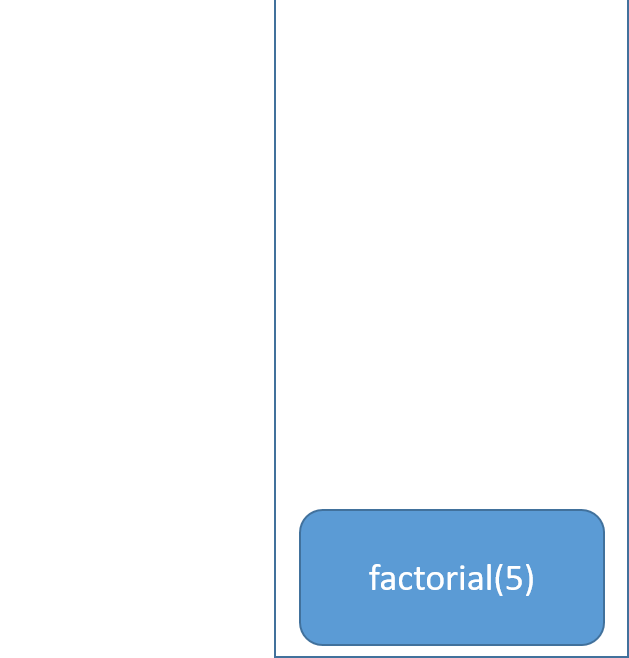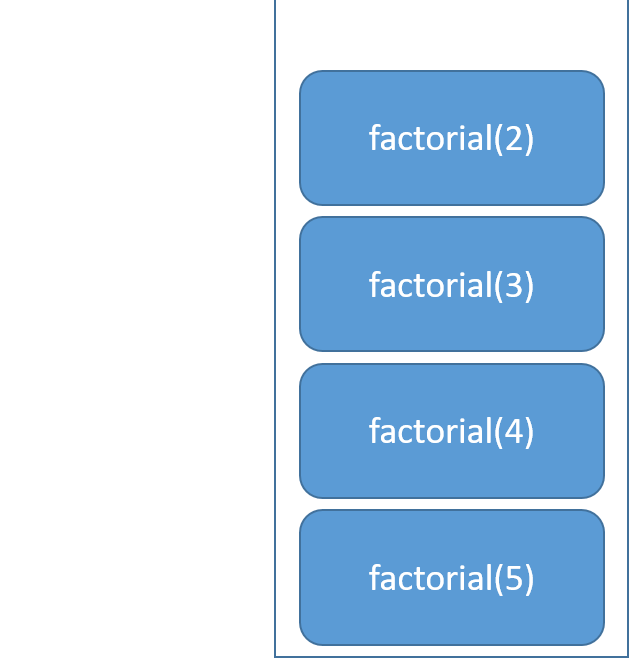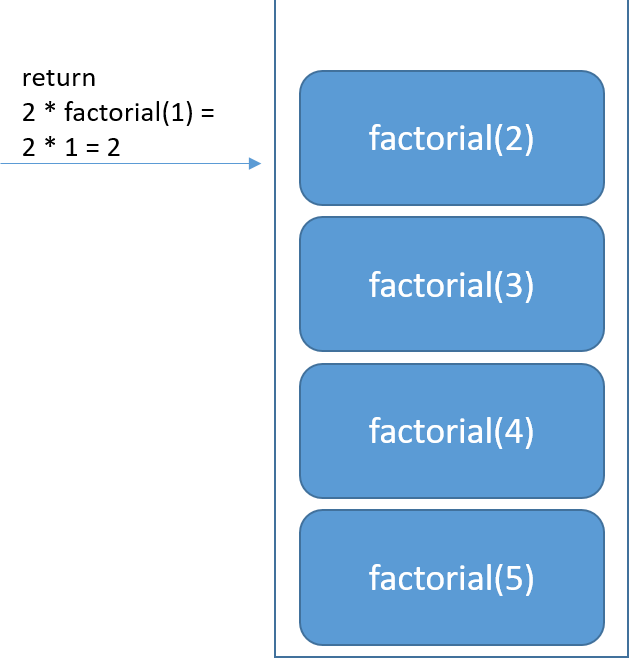Understanding Recursion
Data Structures and Algorithms in Python

Miriam Antona
Software engineer
Definition
- Function calling itself
- Almost all the situations where we use loops
- substitute the loops using recursion
- Can solve problems that seem very complex at first
Example - factorial
$n!$
Example - factorial
$n!=n$ · $(n-1)$ · $(n-2)$ · $...$ · $1$
$5!=$ $5$ · $4$ · $3$ · $2$ · $1=120$
def factorial(n):
result = 1
while n > 1:
result = n * result
n -= 1
return result
factorial(5)
120
Example - factorial using recursion
$n!= n$ · $(n-1)!$
def factorial_recursion(n):
return n * factorial_recursion(n-1)
- Executed forever!
Example - identifying the base case
- Add a condition
- ensures that our algorithm doesn't execute forever
- Factorial base case -> $n=1$
def factorial_recursion(n): if n == 1:return 1else:return n * factorial_recursion(n-1)
print(factorial_recursion(5))
120
How recursion works
- Computer uses a stack to keep track of the functions
- Call stack
How recursion works
factorial(5)starts- Before
factorial(5)finishes ->factorial(4)starts - Before
factorial(4)finishes ->factorial(3)starts

How recursion works
factorial(5)starts- Before
factorial(5)finishes ->factorial(4)starts - Before
factorial(4)finishes ->factorial(3)starts - Before
factorial(3)finishes ->factorial(2)starts

How recursion works
factorial(5)starts- Before
factorial(5)finishes ->factorial(4)starts - Before
factorial(4)finishes ->factorial(3)starts - Before
factorial(3)finishes ->factorial(2)starts - Before
factorial(2)finishes ->factorial(1)starts

How recursion works
factorial(5)starts- Before
factorial(5)finishes ->factorial(4)starts - Before
factorial(4)finishes ->factorial(3)starts - Before
factorial(3)finishes ->factorial(2)starts - Before
factorial(2)finishes ->factorial(1)starts

How recursion works
factorial(1)finishes- returns 1
factorial(2)finishes

How recursion works
factorial(1)finishes- returns 1
factorial(2)finishes- returns 2

How recursion works
factorial(1)finishes- returns 1
factorial(2)finishes- returns 2
factorial(3)finishes- returns 6

How recursion works
factorial(1)finishes- returns 1
factorial(2)finishes- returns 2
factorial(3)finishes- returns 6
factorial(4)finishes- returns 24

How recursion works
factorial(1)finishes- returns 1
factorial(2)finishes- returns 2
factorial(3)finishes- returns 6
factorial(4)finishes- returns 24
factorial(5)finishes- returns 120

How recursion works
factorial(1)finishes- returns 1
factorial(2)finishes- returns 2
factorial(3)finishes- returns 6
factorial(4)finishes- returns 24
factorial(5)finishes- returns 120

Dynamic programming
- Optimization technique
- Mainly applied to recursion
- Can reduce the complexity of recursive algorithms
- Used for:
- Any problem that can be divided into smaller subproblems
- Subproblems overlap
- Solutions of subproblems are saved, avoiding the need to recalculate
- Memoization
Let's practice!
Data Structures and Algorithms in Python

